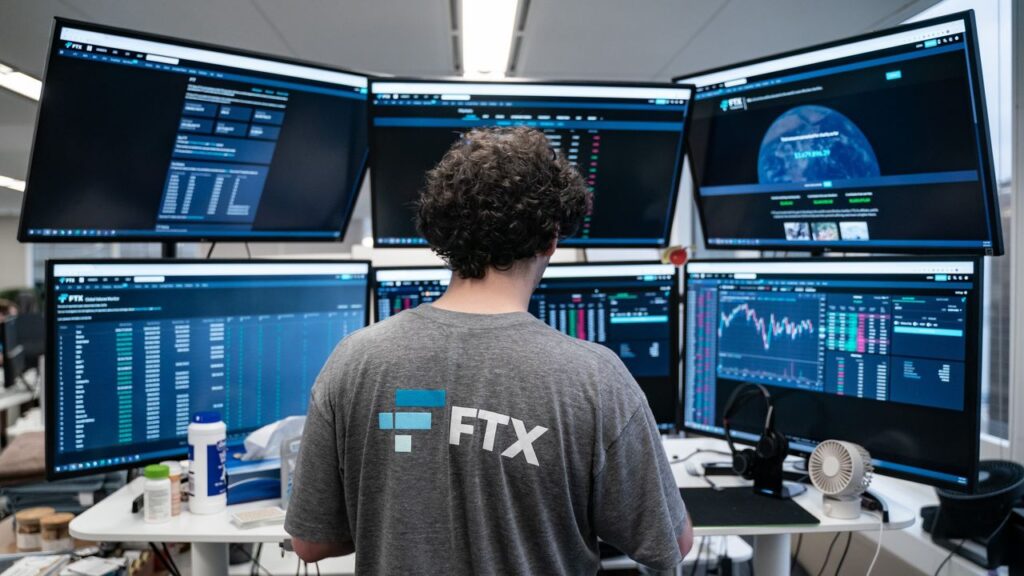Decentralized data warehouse Space and Time (SxT) has announced that its flagship Proof of SQL solution has been integrated into Chainlink. As a result, SxT’s zk-Verifier will run natively on Chainlink nodes. The move is a boon for blockchain projects looking to tap into offchain data and use it to deliver the results onchain. Chainlink’s node network is relied on by thousands of decentralized applications (dapps), providing tamperproof data from on- and off-chain sources.
Chainlink Embraces SxT
Proof of SQL is Space and Time’s solution for enabling data queries to be run offline. The results can then be broadcast onchain, with zero knowledge proofs used to show that the output is accurate and the data has not been tampered with. In putting the zk-Verifier component inside Chainlink’s existing nodes, SxT’s Proof of SQL will be easier to access, placing trusted data within reach of dapps throughout the cross-chain ecosystem.
“We are thrilled to make Proof of SQL available to all databases and to integrate Chainlink as the consensus layer,” said Space and Time CEO Nate Holiday. “As the world’s business increasingly moves to operate at the intersection of blockchain and AI, verifiable data and compute will become more critical than ever. We see a future where every database needs to be verified by Space and Time’s zk-proof.”
As more enterprises embrace blockchain, and the growth of IoT spawns billions of smart sensors whose actions are recorded on high-performance distributed networks, the need for reliable data processing will come into sharp focus. Crunching vast amounts of data onchain is inefficient, while doing so off-chain risks breaking the tamperproof guarantees that are one of blockchain’s hallmarks. Proof of SQL allows dapps to have their cake and to eat it: the benefits of operating within a secure onchain environment while being able to attest to the validity of data introduced from external sources.
The Convergence of AI and Blockchain
Space and Time is convinced that the future of blockchain is very much intertwined with that of AI, and not just because both industries have an unquenchable thirst for GPUs. In July, SxT released a chatbot powered by ChatGPT for database querying, making it easier for developers to query off-chain data using natural language prompts. AI’s requirement for LLMs using vast repositories of data is an ideal use case for Space and Time’s Proof of SQL. With such intensive computation required to be undertaken off-chain, solutions such as Proof of SQL are the only practical way to deliver the outputs from data analysis onchain.
“We’re excited that Space and Time is using Chainlink for secure decentralized computation in its novel Proof of SQL ZK protocol,” said Chainlink’s Sergey Nazarov. “By enabling developers to underpin application databases with cryptographic proof, Chainlink and Space and Time are powering the creation of an end-to-end decentralized tech stack that helps scale web3.”
Decentralization exists on a spectrum, and it may never be possible to create high performance dapps that do not intersect with centralized architecture in any way. Solutions such as Proof of SQL show there are pragmatic workarounds that preserve blockchain’s core value while tapping into data from real world sources.
The United States Securities and Exchange Commission (SEC) has opted to postpone its ruling on a series of proposals concerning spot Bitcoin exchange-traded funds (ETFs).
Notably, BlackRock’s ETF proposal is among those affected, and this delay comes ahead of an anticipated government shutdown.
In addition to BlackRock, the SEC has also extended the waiting period for spot Bitcoin ETF applications submitted by Invesco, Bitwise, and Valkyrie.
These postponements were officially disclosed in separate filings made on September 28.
Notably, Bloomberg ETF analyst James Seyffart anticipates that the applications filed by Fidelity, VanEck, and WisdomTree will likely encounter similar delays at the hands of the securities regulator.
These recent delays have materialized roughly two weeks ahead of the originally scheduled second deadline.
Many applicants were expecting a response from the securities regulator between October 16 and 19. The timing of these delays appears to be closely linked to the looming prospect of a U.S. government “shutdown” set to occur on October 1.
Such an event would disrupt the functioning of the country’s financial regulators and various other federal agencies.
The root cause of these delays lies in the fact that both chambers of Congress, the House, and Senate, have yet to reach an agreement on several funding bills essential for the government’s operational activities.
To avoid a shutdown, Congress must successfully pass 12 separate full-year funding bills by the impending deadline of October 1.
READ MORE: Fornite Developer Cuts 16% of Workforce Amid Metaverse Revenue Shortfall
It’s important to note that this isn’t the first time the SEC has postponed spot Bitcoin ETF applications.
A similar postponement occurred in late August as the initial deadline approached. Looking ahead, the third set of deadlines for these seven firms is scheduled around mid-January.
However, they, too, may encounter further delays. Regardless, the SEC must make a definitive decision no later than mid-March.
In a related development from late August, Bloomberg ETF analyst Eric Balchunas revised his estimation regarding the likelihood of a spot Bitcoin ETF gaining approval by the close of 2023.
He increased the probability from an earlier estimate of 65% to 75%.
Balchunas attributed this heightened likelihood to the unanimous and decisive ruling by the U.S. Court of Appeals Circuit in favor of Grayscale in their legal battle against the SEC.
Furthermore, Balchunas raised these odds to an even more optimistic 95% by the end of 2024, reflecting a growing sense of optimism regarding the potential regulatory approval of a spot Bitcoin ETF.
Other Stories:
Do Kwon Requests Extradition Denial Amidst SEC Investigation
Chinese Consultant Fined $144,907 for Unauthorized VPN Use
Marathon Digital Mines Invalid Bitcoin Block in Experiment, Network Resilience Proves Robust
Circle, the entity responsible for the popular USD Coin (USDC) stablecoin, has entered the fray concerning the ongoing legal battle between the United States Securities and Exchange Commission (SEC) and the crypto exchange giant, Binance.
In a recent court filing, Circle has taken a stance, contending that stablecoins should not be classified as securities under the law.
The crux of Circle’s argument hinges on the nature of stablecoins like Binance USD (BUSD) and USDC, which are explicitly pegged to the U.S. dollar.
Circle asserts that these assets do not exhibit the characteristics typically associated with securities, primarily because individuals purchasing these stablecoins do not harbor any profit expectations stemming from their acquisition.
In other words, payment-oriented stablecoins do not inherently possess the attributes of an investment contract.
This legal skirmish had its origins in the SEC’s move on June 5, when the regulatory body filed a lawsuit against Binance, leveling a total of 13 charges against the cryptocurrency exchange.
Among these allegations, the SEC contended that the sale of Binance’s native BNB tokens and BUSD tokens amounted to unregistered security sales.
READ MORE: Hypothekarbank Lenzburg Joins SDX: Swiss Bank Expands Digital Asset Presence
Additionally, the SEC accused Binance of failing to register as a broker-dealer clearing agency and conducting unauthorized operations within the United States.
Responding to these charges, Binance and its CEO, Changpeng Zhao, sought a dismissal of the SEC’s lawsuit on September 22.
Their legal team argued that the SEC had exceeded its jurisdiction in pursuing the case against them. Binance and Zhao contended that the SEC had failed to provide clear regulatory guidelines for the cryptocurrency sector before initiating legal action, essentially retroactively asserting authority over the industry.
Beyond the realm of cryptocurrencies and exchanges, the SEC has also taken a keen interest in nonfungible tokens (NFTs), deeming them securities as well.
Notably, on August 28, the SEC filed charges against Impact Theory, an entertainment company, in connection with the sale of its NFT collection, asserting that the NFTs constituted unregistered securities.
Further underscoring its stance, on September 13, the SEC brought charges against the entity behind the Stoner Cats NFT collection, alleging that it facilitated the sale of unregistered securities when offering NFTs to the public.
As the legal landscape surrounding cryptocurrencies, stablecoins, and NFTs continues to evolve, these cases serve as critical battlegrounds, with significant implications for how these digital assets are regulated in the United States.
Other Stories:
Crypto Trader’s Cross-Country Journey Ends in Seattle: A Bitter Twist of Fate
Major Cryptocurrency Exchange Bitspay Faces Scrutiny Over Alleged Fake License Claims
Binance Completes Exit from Russian Market, Sells Operations to CommEX
On September 27, Bitcoin made a notable upward move, coinciding with the opening of Wall Street.
This surge in Bitcoin’s price saw it climb to $26,823 on the Bitstamp exchange, marking a 2% increase and reaching weekly highs.
Market analysts had already been keeping a close watch on the cryptocurrency’s price movement, anticipating the possibility of a breakout.
One prominent trader known as Skew pointed out that the liquidity for purchasing Bitcoin was relatively thin at the moment, suggesting that a further upward move might come from perpetual contracts (perps).
This situation could potentially create opportunities due to inefficiencies and potential premiums in the market.
Additionally, on-chain monitoring data from Material Indicators revealed increased activity among a specific class of whales known for their influence on Bitcoin’s price.
This development was seen as a positive sign for Bitcoin’s price action.
Material Indicators also highlighted that Bitcoin’s move above the $26,500 mark had invalidated a warning signal triggered by a “death cross” on the daily chart earlier in the week.
READ MORE: Judge Allows Evidence of Political Donations in Sam Bankman-Fried’s Fraud Trial
Keith Alan, co-founder of Material Indicators, expressed confidence in following the trading strategies of these influential whales, stating, “Purple buys dips and sells rips. I’m happy to swim in their wake.”
Renowned analyst Michaël van de Poppe shared his insights, suggesting that if Bitcoin could maintain its price above $26,500, there was a strong likelihood of it reaching $30,000 by October.
Data from the monitoring resource CoinGlass showed that short liquidations in the Bitcoin market remained relatively low.
Around $13 million worth of Bitcoin shorts were liquidated on that day, contributing to a total cross-crypto liquidation amount of $39 million.
At the time of writing, Bitcoin was trading at approximately $26,700, demonstrating ongoing volatility in the cryptocurrency market.
As Bitcoin continued to show strength and resilience, many traders and investors remained optimistic about its potential for further gains in the near future.
Other Stories:
‘BitBoy’ Arrested During Livestream Outside Former Associate’s Home Over Lamborghini Dispute
EOS Is Becoming a Climate Positive Network That Will Offset Its Energy Consumption by 3x
Binance and Mitsubishi UFJ Trust Collaborate on Japanese Stablecoin Initiative
A Bitcoin enthusiast’s ambitious journey to crypto-trade his way from New York to Alaska recently encountered an abrupt and disappointing conclusion approximately 900 miles shy of his final destination.
Thomas Kralow, a cryptocurrency trader and educator, undertook the audacious challenge of traversing the entire breadth of the United States, relying solely on cryptocurrency trading for funding.
On August 12th, Kralow, accompanied by his assistant Ilya, embarked on the journey from New York with an initial cash budget of $5,000.
They invested some of their funds in a well-worn Mercedes and equipped it with a Starlink antenna to ensure fast internet connectivity for swift crypto trades.
This left them with a mere $2,500 to finance their voyage to Alaska.
Regrettably, Kralow’s expedition did not reach its intended destination. His fuel-depleted vehicle came to a permanent halt in Seattle, just 12 days into their journey.
Kralow shared some unpublicized aspects of the trip with Cointelegraph.
He revealed that the journey was marked by “intensely frightening” lightning storms, wildfires, car issues, theft, and the challenge of navigating an ever-changing environment in a foreign land on a shoestring budget. However, the most daunting obstacle proved to be the trading itself.
“We had, like, $2,500 our initial trading deposit, and we had approximately $300 per day in expenses, which means every day, we had to earn, like, 12% to 14%,” Kralow admitted.
“Anyone who is into the world of finance would think it’s just suicide, which it kind of was.”
Despite the overwhelming odds, Kralow emphasized that the potential risks didn’t deter him.
He acknowledged that part of the motivation behind the journey was to expand his social media following. Nevertheless, he had a broader message for his viewers: “It’s all about happiness and Bitcoin.”
READ MORE: Crypto Exchanges Collaborate to Investigate $8 Million HTX Hack
Throughout his YouTube series documenting the crypto-fueled odyssey, Kralow aimed to convey the importance of leading a content and appreciative life while sharing knowledge about the remarkable cryptocurrency industry and Bitcoin.
Kralow, known for showcasing his wealth on social media, described the journey as a “humbling” experience that reconnected him with his humble origins and upbringing.
Surprisingly, Kralow discovered a significant level of cryptocurrency literacy in unexpected pockets of the United States.
He recounted meeting a welder in Louisiana who displayed a profound understanding of Bitcoin, contrasting sharply with his expectations in tech-savvy regions like Silicon Valley, where he encountered people unfamiliar with cryptocurrencies.
Kralow’s next undertaking after concluding the journey involved submitting a request to the Guinness Book of World Records.
He believes that no one has ever traveled more than 5,000 miles solely relying on earnings from trading Bitcoin or cryptocurrencies, a unique feat that deserves recognition.
Other Stories:
Digital Transformation Revolutionizes Traditional Industries
MicroStrategy Bolsters Bullish Stance on Bitcoin with $147.3 Million BTC Purchase
Despite concerns that Bitcoin Ordinals are causing network congestion, there is limited evidence to support the idea that inscriptions are displacing higher-value Bitcoin monetary transfers, according to the recent report by on-chain analytics firm Glassnode on September 25.
The primary reason for this phenomenon is that inscription users often opt for low fee rates, showing a willingness to wait for longer confirmation times.
In essence, they are choosing to buy and utilize the cheapest available blockspace, making them more susceptible to being displaced by more time-sensitive monetary transfers.
Introduced in February 2023, Bitcoin Ordinals have become the dominant force in terms of daily transaction count on the Bitcoin network.
However, this hasn’t translated directly into a substantial share of mining fees, accounting for only approximately 20% of Bitcoin transaction fees, as observed by Glassnode.
While inscriptions have increased the baseline demand for blockspace and subsequently raised fees for miners, there has also been a notable 50% increase in Bitcoin’s hash rate since February.
READ MORE: Digital Transformation Revolutionizes Traditional Industries
This heightened competition among miners for fee revenue, combined with the impending halving event, is putting pressure on their profitability unless Bitcoin prices experience a significant increase in the near future.
Currently trading at $26,216, Bitcoin’s price is expected to appreciate to some extent leading up to the scheduled halving event in April 2024, as anticipated by industry experts.
It’s worth noting that the majority of inscriptions are linked to BRC-20 tokens, introduced just one month after Casey Rodarmor launched the Ordinals protocol on Bitcoin in February.
On September 25, Rodarmor proposed “Runes” as a potential alternative to BRC-20 tokens.
He suggested that an unspent transaction output-based fungible token protocol like Runes would help reduce the accumulation of “junk” unspent transaction outputs on the Bitcoin network, potentially alleviating some of the concerns surrounding Bitcoin Ordinals and their impact on network congestion.
Other Stories:
Crypto Exchanges Collaborate to Investigate $8 Million HTX Hack
MicroStrategy Bolsters Bullish Stance on Bitcoin with $147.3 Million BTC Purchase
The impending $3 billion Bitcoin monthly options expiration on September 29th looms large, potentially impacting the critical $26,000 support level.
On one hand, Bitcoin’s recognition in China seems to be growing stronger, as a Shanghai Court recognized digital currencies as unique and non-replicable in a recent judicial report.
However, on the flip side, Bitcoin’s spot exchange trading volumes have reached a five-year low, attributed to increasing concerns about the macroeconomic outlook.
Cauê Oliveira, an analyst at CryptoQuant, highlighted this decline in trading activity.
Reduced trading volume poses a risk of unexpected volatility, especially in the face of liquidations in derivative contracts.
Adding to the uncertainty, traditional financial institutions like JPMorgan Chase are increasingly wary of handling crypto-related payments, as they aim to guard against fraudulent activities.
Furthermore, Bitcoin holders are on edge as the Dollar Strength Index (DXY) reached its highest level in ten months, standing at 106 on September 26th.
Historically, the DXY’s ascent correlates with risk-off behavior among investors, indicating a preference for cash positions.
The open interest for the September 29th options expiration stands at $3 billion, though expectations of Bitcoin reaching $27,000 or higher may result in a lower final amount.
READ MORE: Crypto Exchanges Collaborate to Investigate $8 Million HTX Hack
This bullish sentiment may have been bolstered by the unsuccessful attempt to break above $27,200 on September 19th, potentially breeding overconfidence.
Examining the put-to-call ratio, there’s an imbalance between the $1.9 billion in call open interest and the $1.1 billion in put options.
However, if Bitcoin’s price hovers around $26,300 at 8:00 am UTC on September 25th, only $120 million worth of call options will be viable, rendering higher-priced call options useless if BTC’s price remains below those levels on expiry.
Given the current price action, four likely scenarios emerge, each with varying numbers of options contracts available for call and put instruments.
The net result tilts in favor of put instruments in most scenarios, potentially signaling a bearish sentiment.
In conclusion, the odds of Bitcoin’s price dropping below $26,000 by September 29th seem high, particularly considering the recent market dynamics, investor sentiment, and the options landscape.
However, this analysis doesn’t account for more complex investment strategies, and market dynamics can change rapidly, so investors should closely monitor the situation in the coming days.
Other Stories:
Digital Transformation Revolutionizes Traditional Industries
MicroStrategy Bolsters Bullish Stance on Bitcoin with $147.3 Million BTC Purchase
Binance, one of the leading cryptocurrency exchanges, has joined forces with Japan’s largest bank, the Mitsubishi UFJ Trust and Banking Corporation (MUTB), to embark on a collaborative venture aimed at exploring the issuance of stablecoins within the Japanese market.
The partnership, announced by Binance Japan on September 25, is geared towards facilitating the accelerated adoption of Web3 technologies in Japan.
Specifically, the initiative intends to introduce Japanese yen and other fiat-backed stablecoins into the ecosystem.
To achieve this, the two entities intend to leverage the stablecoin issuance platform known as Progmat Coin, which is operated by MUFG.
Mitsubishi UFJ Trust and Banking Corporation will play a pioneering role in developing the Progmat Coin platform, positioning it as the infrastructure for issuing stablecoins in accordance with Japan’s recently revised and enacted Payments Services Act.
This legislation, which came into effect in June, grants Japanese banks and regulated cryptocurrency service providers the authority to issue stablecoins.
Progmat Coin is designed to facilitate stablecoin issuance on various networks, including Ethereum, Polygon, Avalanche, Cosmos, and BNB Chain.
Takeshi Chino, the General Manager of Binance Japan, emphasized the critical role stablecoins play within the broader financial ecosystem.
He highlighted their ability to offer cost-effective and near-instantaneous cross-border trade settlement for businesses, as well as seamless crypto transactions for retail investors.
READ MORE: Bitcoin Holds Steady at $26,500 as Accumulation Continues Amid Market Stability
Stablecoins are recognized as a fundamental component for the successful adoption of Web3 technologies.
According to Tatsuya Saito, Vice President of Product at MUFG, the stablecoin market in Japan has the potential to reach up to 5 trillion yen (approximately $34 billion).
This figure represents around 27% of the estimated current global stablecoin market, which stands at $123.7 billion according to CoinGecko.
Despite regulatory challenges faced by Binance in Western markets, the exchange expanded its services to the Japanese market in August 2023, offering a range of 34 tokens.
Simultaneously, reports suggest that Orix Bank in Japan is also contemplating the issuance of stablecoins. Orix plans to commence testing yen, United States dollar, and other stablecoins in October, with an anticipated launch in 2024.
These stablecoins will be backed by fiat deposits and utilize the Japan Open Chain blockchain, developed by Tokyo-based G.U. Technologies and its partners.
Japan appears poised to become a significant player in the stablecoin arena, with various entities exploring stablecoin initiatives, and the government reportedly planning to allow startups to raise public funds through the issuance of crypto assets and stablecoins.
Other Stories:
Couple Faces Trial Over $10.5 Million Mistakenly Sent to Them
Coinbase’s Layer-2 Network Base Surpasses Solana with $397.32 Million TVL Surge
Terra Classic Community Votes to Halt USTC Minting for Stable Peg Restoration
The evolution of EOS is continuing apace with news that the proof-of-stake chain is to become carbon positive. The term may not be familiar to the average blockchain user, being synonymous with environmentally-minded corporations committed to ESG. It essentially means going above and beyond the minimum required to offset an organization’s carbon consumption by over-compensating through funding sequestration efforts elsewhere. In EOS’ case, it will be offsetting its energy by a factor of 3x.
Carbon reduction can assume many forms, with tree planting being one of the most popular methods. In each instance, the goal is to counter the carbon that is used, in this instance from the energy demands of a blockchain network. In the case of EOS, this primarily entails running the nodes required to validate transactions and keep a decentralized record of activity across multiple servers. 242 tonnes of CO2 is consumed by EOS each year, but this has been offset since 2018 and will henceforth be offset threefold.
Upland and Aerial Lend Their Support
EOS’ decision to go fully green, and sail under the banner of carbon positivity, has not been a unilateral decision. On the EOS side, the chain’s primary developer, EOS Network Foundation, has led the move, but there’s also been support from Upland and Aerial. Upland is a metaverse superapp that also has a track record of assisting EOS in its carbon offsetting up until now. Aerial, meanwhile, is a sustainability platform that is no stranger to environmental causes.
“Partnering with the EOS Network Foundation and Upland in this climate positive initiative is an important milestone in the sustainability journey of the blockchain industry,” said Aerial CEO Andreas Homer, commending “such forward-thinking organizations that are dedicated to environmental responsibility and making significant positive changes.”
It appears that after embracing the climate positive ideology, EOS will endeavor to attract projects committed to sustainability and environmental initiatives. On its green and performant chain, they will receive a warm welcome from architects EOS Network Foundation as well as other developers who share these values.
EOS Comes of Age
On September 21, EOS Network Foundation celebrated the one-year anniversary of EOS’ “independence.” A year ago, the EOS community voted to migrate from the old codebase and transition to Antelope Leap, freeing itself of the baggage associated with the former regime. A series of EOS NFTs have recently been minted to mark the milestone.
As it continues to forge its own trajectory, EOS is showing that it can differentiate itself from the numerous other smart contract chains out there, championing unique use cases and forging communities united by shared values and goals. After going carbon positive, EOS can justifiably claim to be the world’s greenest blockchain network. It might not have begun life as an environmentalist’s dream, but five years on, it’s evolved into something far more novel than its original architects could have imagined.
Coinbase, a prominent cryptocurrency exchange, made two attempts to acquire FTX Europe, with the intention of expanding its derivatives business internationally.
However, it has now been revealed that Coinbase has decided against pursuing this acquisition, as reported by Cointelegraph.
These acquisition endeavors occurred in November 2022, shortly after FTX’s parent company experienced a significant setback, and again in September 2023.
A spokesperson from Coinbase confirmed the reports, stating, “We’re always evaluating opportunities to strategically expand our business and meet with many teams around the world.”
Besides Coinbase, other entities expressing interest in acquiring FTX Europe include Crypto.com and Trek Labs.
The sale deadline for FTX Europe has been extended until September 24. FTX had previously invested nearly $400 million in its European branch.
FTX Europe conducted its derivatives trading activities under a regulatory license from Cyprus. At the time of its parent company’s downfall, it was the sole provider of several popular derivatives products, including perpetual futures.
Derivatives are financial instruments whose value is derived from an underlying asset, such as Bitcoin (BTC).
READ MORE: Creators Embrace Decentralized Platforms as Web3 Reshapes Adult Content Industry
They encompass various types, including options, futures, and swaps, and are commonly used by investors for hedging, leverage, and market speculation, making them a favored strategy among traders and institutional investors.
The potential acquisition of FTX Europe could have significantly boosted Coinbase’s fee revenue, given the growing popularity of crypto derivatives trading, even during bear markets.
Coinbase’s latest quarterly earnings report revealed $707 million in revenue for the second quarter of 2023, with $327 million attributed to spot trading—a 13% decline from the previous quarter.
Simultaneously, global derivatives trading volumes on centralized exchanges experienced a 13.7% surge in June, reaching $2.13 trillion, as per CCData.
Binance emerged as the leading platform for cryptocurrency derivatives trading, with a trading volume exceeding $1.21 trillion in June, followed by OKX exchange at $416 billion, marking a 44.9% increase in activity.
Bitcoin futures trading also spiked on the CME exchange, reaching $37.9 billion, a 28.6% increase in the same month.
Notably, Coinbase has also ventured into the derivatives markets in the United States. In August, it received regulatory approval to offer crypto futures investments to eligible customers in the country.
This approval enabled Coinbase to introduce Bitcoin and Ether (ETH) futures contracts through its Commodity Futures Trading Commission-regulated derivatives exchange, FairX.
The global crypto derivatives market, according to Coinbase, represents nearly 75% of crypto trading volume worldwide and serves as a critical access point for traders.
Other Stories:
ASIC Launches Legal Action Against Kraken’s Australian Operator Bit Trade
South Korea’s Cryptocurrency Holdings Surpass $98 Million, Dominating Overseas Assets
Bitcoin Holds Steady at $27,000 as Crypto Community Awaits Fed’s Decision










